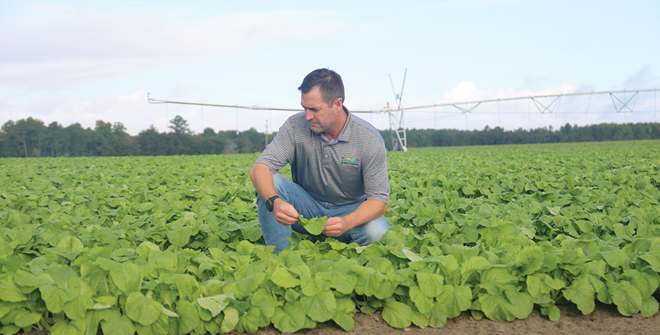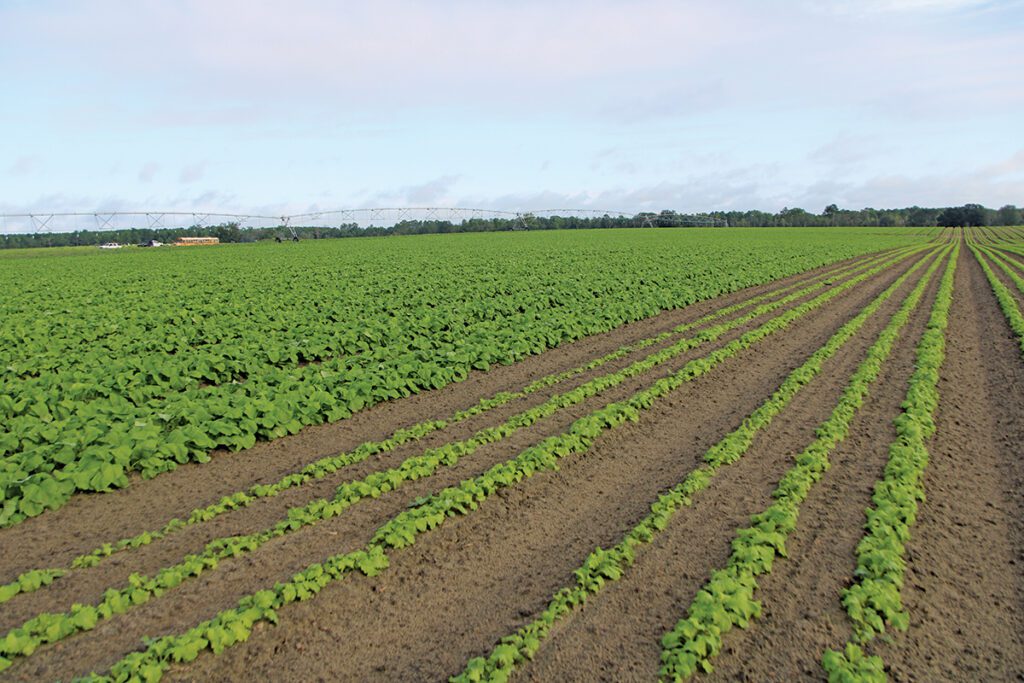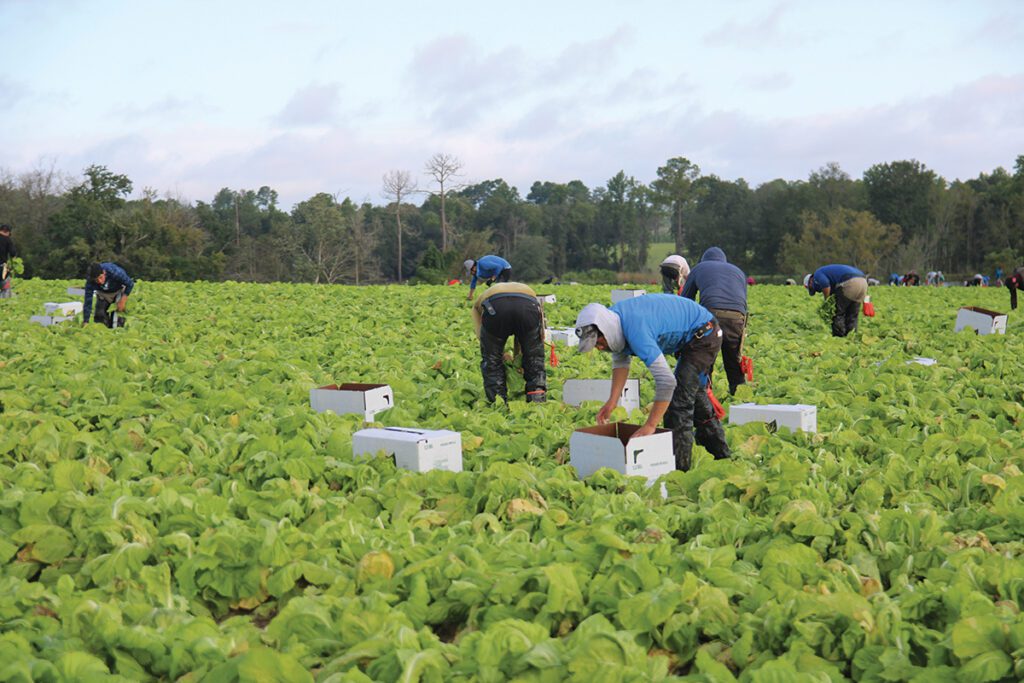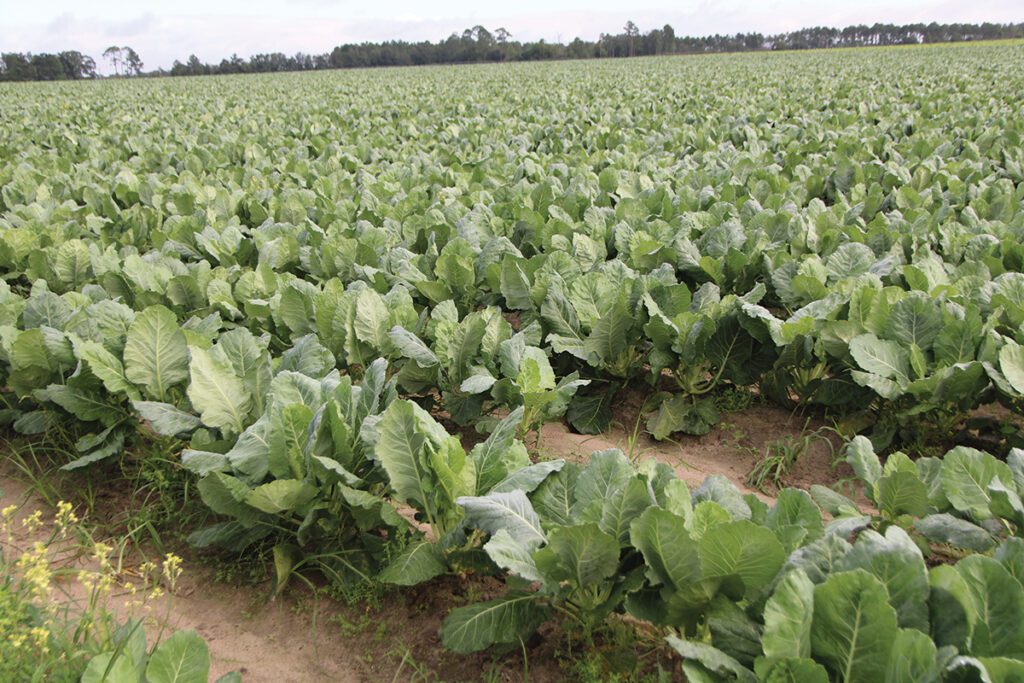

Mar 10, 2024Going greens: Baker Farms finds success in timely switch
Family and a dedication to producing distinctive crops are parts of the recipe of success for Baker Farms LLC.
The third-generation family-run grower, shipper and processor of leafy greens has been growing vegetables in southwest Georgia since 1970. The desire to not push a product on a customer that wasn’t of consistent quality was one reason the Ellenton, Georgia, operation decided to move away from traditional southern vegetables to leafy greens.
In 1970, when he was in his early 20s, Terry Baker, founder and CEO, was working in the pork industry for Swift Farms in accounting and general management. He entered farming after declining a relocation offer. Baker started growing small amounts of tobacco, green and squash, cotton and peanuts.


Later that decade, he expanded squash acreage and began growing red potatoes, cucumbers and bell peppers. Later still, he added cabbage and greens, which became a favorable cash item.
The move proved timely as greens became more popular in the 2000s. Collards have long been Baker Farms’ biggest crop with kale in second place. At the turn of the century, the farm began growing specialty items, including cilantro, beets, Swiss chard, bunched spinach and complementary items. In the early 2010s, Baker Farms constructed a processing facility for bagged greens.
A year-round operation
Baker Farms grows on more than 5,000 acres, with year-round plantings. Southwest Georgia’s climate supports spring and fall produce, allowing 10 months of greens production. While some leafy items cannot handle Georgia’s oppressive summer heat, others, including collards and kale, are produced throughout the year.
Partnerships allow for year-round shipments, and one such arrangement with Maine’s Smith Farms created a 12-month broccoli program.
Georgia greens benefit from late spring and summer Gulf of Mexico showers, while the Gulf warmth keeps winter temperatures stable, said Heath Wetherington, general manager.
Over the past decade, Baker Farms has adopted technology, including applications aiding water conservation, field mapping, maintenance and food safety. Apps show managers where and when water is required while field mapping decreases inputs and seeds and reduces waste. Apps aid decision making, helping managers project and match product field availability and production with demand. Planting schedules ensure the correct acreage is planted at the best times, eliminating multiple trips to assess field situations, Wetherington said.


Because most of Baker Farms’ irrigation is electric, fuel is conserved. Still, the rising cost of utilities continues to be a concern.
Real-time data is shared throughout the organization, allowing effective communication to ensure order fulfillment.
“The larger a company gets, the more departmentalized it becomes, and the more difficult it can be to communicate across those departments,” Wetherington said. “The more information you can get in front of the right people, the better your decision making will be.”
Soil health
As the company grew and acreage expanded, that brought crop rotation issues. Georgia’s official state soil, known as Tifton soil, is a loamy sand-based soil, but stiff enough to hold and prevent nutrient leaching during heavy rains.
Baker Farms developed a corn and millet overseeding program to focus on soil health. A decade ago when the farm began paying more attention to rotation, the Bakers noticed significant differences in adding rotational crops into the mix.
“We pride ourselves as being vegetable growers, but crops like corn and millet also play a big part in that soil health as rotational crops,” Wetherington said.
The diamondback moth is the biggest pest threat to leafy greens, with whiteflies the second. Black spot/leaf spot has long been a leafy greens nemesis.
Professional agronomists scout fields regularly.
The Bakers apply their wisdom in application recommendations for pests and disease. Since 2020 pests and disease haven’t been big headaches for Baker Farms as they have in the past.
“Staying on top of your scouting programs and making applications when needed help keep insects and fungus manageable,” Wetherington said.
A family effort
At the start of the one-man operation, Terry Baker hired his younger sisters and friends to aid in planting and harvesting. In 1989, Joe Baker, CEO, partner and Terry’s oldest son, joined and in the 1990s developed the idea to focus exclusively on greens. Richard Baker, Terry’s other son, manages processing and food safety.
Terry’s daughter Jennifer works in office and payroll and is married to Wetherington, who joined in 2002.


Though a family member may specialize in an area, each wears many different hats and works in several areas of the business. Joe and Lia Baker’s son, John, is farm manager while John’s wife Libby is in sales. Joe and Lia Baker’s son-in-law, Bryce Bullard, is a farm manager. Jennifer Baker Wetherington is payroll manager and Heath and Jennifer’s daughter Jacey is in college and is a Baker Farms marketing assistant. Richard and Kim Baker’s son Andy is in college and works part time on the farm’s food safety. Other principals’ family members are in school.
“It’s like batting 1,000,” Heath Wetherington said. “Most family members that are old enough are involved. It’s important because no one’s going to look after your business like your family. Having some skin in the game is an important part, especially in farming.
“Family involvement brings challenges. It’s blood, sweat and tears. It’s not a five-day-a-week 9-to-5 business we work in. It’s seven days a week.”
Wetherington uses an analogy of a treehouse: the fun was in building it, not sitting in it.
“There’s always something to do in farming and the scenery is always changing,” he said. “My favorite part of being a farmer is seeing that product go from seed to sales. Seeing the product go from seed to right before peak of harvest, there’s no better intrinsic reward to know you watched that baby plant and took care of it, nurturing it all the way to harvest.”
— Doug Ohlemeier, assistant editor
Top photo: Heath Wetherington of Baker Farms in a field of small curly leaf turnip greens. In the 1990s, Baker Farms moved away from growing traditional Southern vegetables to focus on leafy greens.














